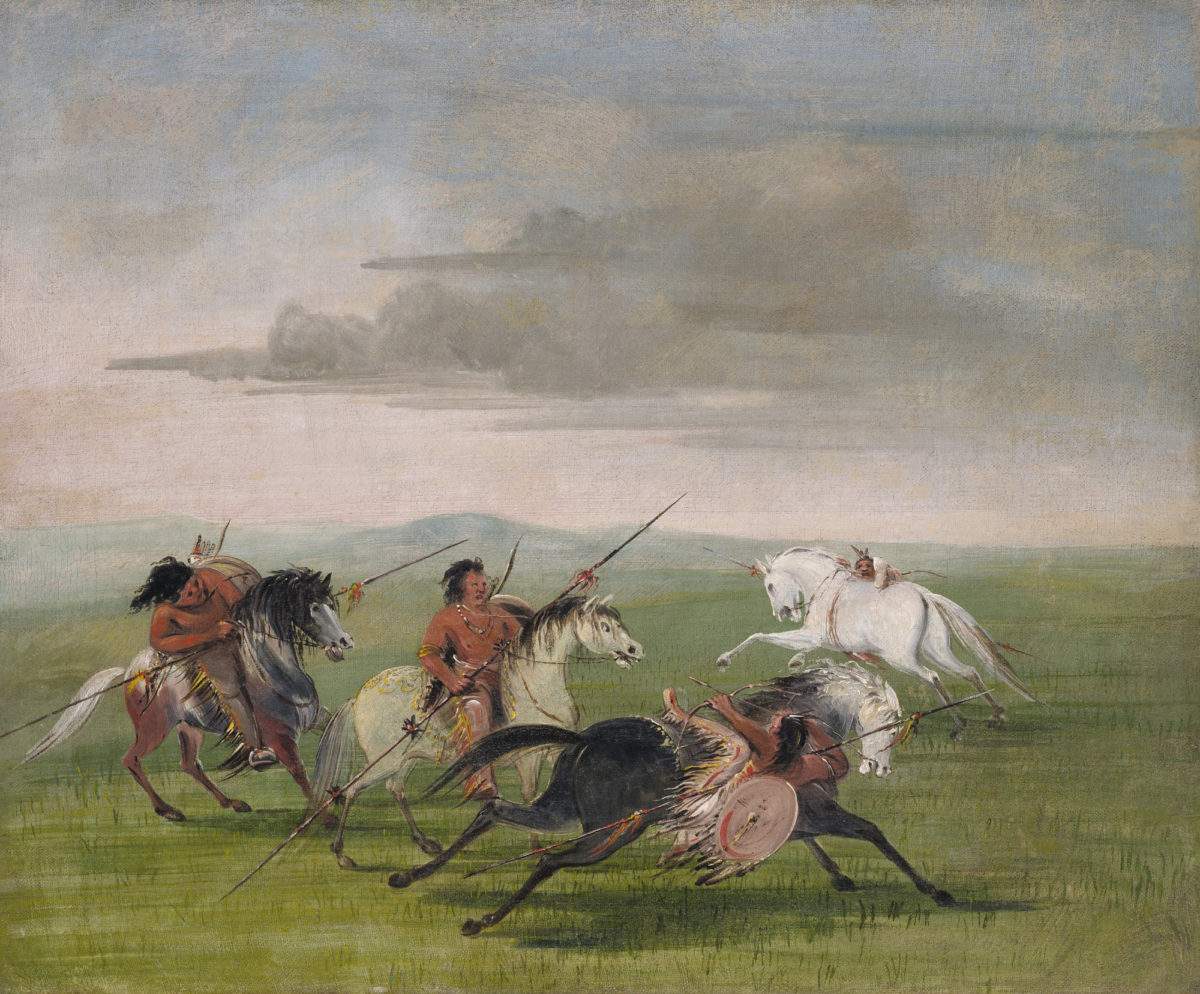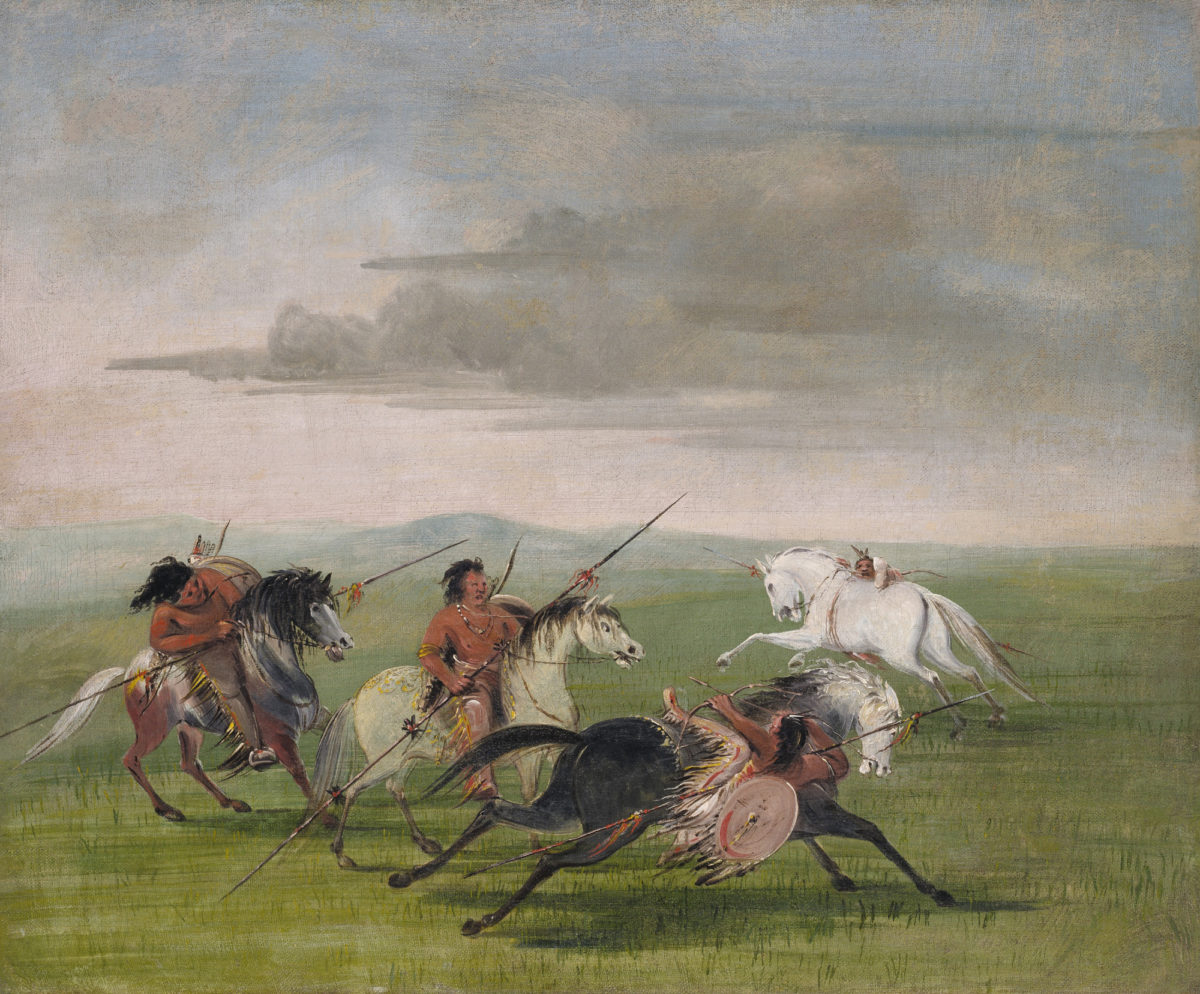[ad_1]

George Catlin, Comanche Feats of Horsemanship, 1834–35.
SMITHSONIAN AMERICAN ART MUSEUM
Followers of HBO’s new TV series Watchmen often don’t know what to expect from a perplexing show that is less an adaptation of the fabled 1986 Alan Moore graphic novel than a “remix” of its anti-superhero tale, according to show creator (and The Leftovers visionary) Damon Lindelof. So the appearance of an artwork by the 19th-century painter George Catlin in an episode on Sunday night only added to the air of mystery.
The painting, Comanche Feats of Horsemanship (1834–35), is shown in the home of a white police chief who is lynched at the end of the first episode, seemingly by a shadowy 105-year-old black man in a wheelchair. As the show’s protagonist, a policewoman/superhero, later learns, the chief had skeletons in his closet—in the form of a Ku Klux Klan robe hanging near his bedroom.
All of that makes the painting’s appearance on Sunday weirder and more political. Before he died in 1872, at the age of 76, Catlin was a self-taught artist who painted so many images of Native Americans that he intended to create an entire museum of them, to be called the Indian Gallery. “If my life be spared, nothing shall stop me from visiting every nation of Indians on the continent of North America,” he once said. He wound up making hundreds of these paintings—and donating a significant store of them to the Smithsonian American Art Museum in Washington, D.C., which now owns Comanche Feats of Horsemanship.
By the standards of today, Catlin’s paintings might well be considered colonialist. As W. Richard West, former director of the Smithsonian Institution’s National Museum of the American Indian and a member of the Cheyenne and Arapaho tribes, has written, “A native person is challenged, I think, not to feel on some level a profound resentment toward Catlin; his obsession with depicting Indians has an extremely invasive undertone to it.”
As for the work on Watchmen, Catlin painted what he witnessed during the time of the Comanche-Mexican Wars, when members of the Comanche people raided Mexicans amid disputes over land invaded in what is now Texas. Catlin was fascinated by what he called the Comanche people’s “feats of riding,” and attempted to capture a particular battle strategy he prized.
Why or how the painting belongs to a character in Watchmen is not explained, and it is made all the more complicated by a shot that follows of an as-yet-unidentified white man with violent tendencies riding a white horse—much like a figure in the artwork.
Whatever the painting might signify, it would seem to fall in line with the show’s larger interest in distinctly American histories of racism. As Lindelof put it recently in an interview with NPR, Watchmen is “about the pain and trauma that is sort of buried in the American consciousness. And I started to feel like it was incredibly important to tell a story about race. To not tell a story about race in the context of a political text in 2019 almost felt borderline irresponsible.”
[ad_2]
Source link

